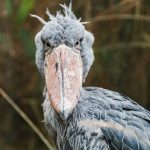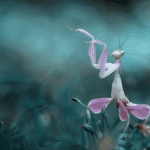 Technology
Technology  Technology
Technology  Humans
Humans 10 Everyday Human Behaviors That Are Actually Survival Instincts
 Animals
Animals 10 Animals That Humiliated and Harmed Historical Leaders
 History
History 10 Most Influential Protests in Modern History
 Creepy
Creepy 10 More Representations of Death from Myth, Legend, and Folktale
 Technology
Technology 10 Scientific Breakthroughs of 2025 That’ll Change Everything
 Our World
Our World 10 Ways Icelandic Culture Makes Other Countries Look Boring
 Misconceptions
Misconceptions 10 Common Misconceptions About the Victorian Era
 Mysteries
Mysteries 10 Strange Unexplained Mysteries of 2025
 Miscellaneous
Miscellaneous 10 of History’s Most Bell-Ringing Finishing Moves
 Technology
Technology Top 10 Everyday Tech Buzzwords That Hide a Darker Past
 Humans
Humans 10 Everyday Human Behaviors That Are Actually Survival Instincts
 Animals
Animals 10 Animals That Humiliated and Harmed Historical Leaders
Who's Behind Listverse?

Jamie Frater
Head Editor
Jamie founded Listverse due to an insatiable desire to share fascinating, obscure, and bizarre facts. He has been a guest speaker on numerous national radio and television stations and is a five time published author.
More About Us History
History 10 Most Influential Protests in Modern History
 Creepy
Creepy 10 More Representations of Death from Myth, Legend, and Folktale
 Technology
Technology 10 Scientific Breakthroughs of 2025 That’ll Change Everything
 Our World
Our World 10 Ways Icelandic Culture Makes Other Countries Look Boring
 Misconceptions
Misconceptions 10 Common Misconceptions About the Victorian Era
 Mysteries
Mysteries 10 Strange Unexplained Mysteries of 2025
 Miscellaneous
Miscellaneous 10 of History’s Most Bell-Ringing Finishing Moves
10 Ways Animals Use Deception to Survive
The act of deception is as old as the human race itself. Just as humans use deception to survive until the long arm of the law catches up with them, the same also applies to animals. However, we are not aware of whether animals use a 911 system. We also do not know the location of their courts. So they usually get away with their sneaky deceptiveness!
Sometimes, the level of deception involved in certain animals’ survival is so spectacular that you are left baffled at the interesting complexity of nature. These are ten ways animals use deception to survive:
Related: Top 10 Amazing Prehistoric Creatures With Unexpected Adaptations
10 Anglerfish Uses Natural “Bright Light” to Draw in Prey
The anglerfish is a fascinating deep-sea predator known for its unique hunting technique. These fish inhabit the dark depths of the ocean, where sunlight barely penetrates. Female anglerfish possess a bioluminescent lure that extends from their heads, known as an esca. This glowing lure is used to attract unsuspecting prey in the pitch-black environment.
When potential prey, such as small fish or crustaceans, is drawn to the light, the anglerfish remains motionless, blending seamlessly with its surroundings. Once the prey is close enough, the anglerfish strikes with lightning speed, using its large, sharp teeth to capture and swallow the victim whole. The anglerfish’s jaw and stomach are highly expandable, allowing it to consume prey up to twice its size.
This remarkable adaptation ensures the anglerfish’s survival in the nutrient-scarce depths of the ocean. The combination of bioluminescence and a highly specialized hunting strategy makes the anglerfish a formidable predator in its dark, mysterious habitat.[1]
9 Cuckoo Birds Deceive Other Bird Species to Raise Their Own Chicks
The cuckoo bird is notorious for its unique reproductive strategy known as brood parasitism. Instead of building nests and raising their own chicks, female cuckoos lay their eggs in the nests of other bird species. This clever deception ensures that the host birds, often much smaller and unsuspecting, end up raising the cuckoo’s offspring.
To execute this strategy, the female cuckoo observes the target nest closely, waiting for the opportune moment when the host parents are away. She quickly lays an egg that mimics the appearance of the host’s eggs. This camouflage reduces the chances of the egg being rejected. Some cuckoos even remove one of the host’s eggs to further avoid detection.
Once the cuckoo chick hatches, it often outcompetes or even ejects the host’s own chicks from the nest, ensuring it receives all the parental care and food. The host birds, unaware of the deception, continue to feed and nurture the cuckoo chick as if it were their own. This cunning adaptation allows the cuckoo to spread its genes without investing in parental care, making it a master of avian deception.[2]
8 Pike Fish Blend With Aquatic Vegetation for Quick and Surprise Attack
The pike fish is a formidable freshwater predator known for its stealth and sudden, powerful attacks. Found in lakes, rivers, and slow-moving streams, pikes are adept hunters with a distinctive hunting technique that relies on deception and speed.
Pike fish are perfectly camouflaged with their environment, thanks to their elongated, torpedo-shaped bodies and mottled coloring, which helps them blend seamlessly with underwater vegetation and debris. They lie motionless in the water, often near the bottom, patiently waiting for unsuspecting prey to come within striking distance.
When a potential meal, such as a smaller fish or amphibian, ventures too close, the pike uses its highly developed lateral line system to detect the slightest movement. This sensory adaptation allows the pike to accurately pinpoint the prey’s location. In a split second, the pike propels itself forward with a powerful thrust of its tail, launching a surprise attack. Its sharp, backward-facing teeth ensure the prey cannot escape once caught.[3]
7 Bolas Spiders Can Pretend to Be Female Moths
The bolas spider is a fascinating arachnid known for its unique and deceptive hunting strategy, which involves mimicking the pheromones of female moths. This clever tactic lures male moths to their doom.
Bolas spiders do not spin typical webs. Instead, they produce a single silk thread with a sticky droplet, or “bolas,” at the end. The spider releases chemicals that closely resemble the sex pheromones of specific female moth species. Male moths, attracted by what they perceive as potential mates, are drawn to the scent.
When a male moth approaches, the bolas spider swings its sticky droplet in a lasso-like motion, ensnaring the moth. The spider’s accuracy in capturing the moth is impressive, often managing to trap its prey with a single swing. Once the moth is caught, the spider reels it in and administers a paralyzing bite.
This method of deception and precision hunting allows the bolas spider to effectively capture prey without expending much energy. By exploiting the moth’s mating instincts, the bolas spider ensures a steady supply of food, showcasing one of nature’s most remarkable examples of predatory trickery.[4]
6 Viceroy Butterflies Pretend to Be Another Species to Survive
The viceroy butterfly is a master of mimicry, using deception to protect itself from predators. This butterfly, found across North America, closely resembles the more well-known monarch butterfly. The viceroy’s survival strategy hinges on this remarkable resemblance.
Monarch butterflies are toxic to many predators due to the milkweed they consume during their larval stage. Birds and other potential predators learn to avoid the distinct orange and black pattern of monarchs to avoid ingesting the toxins. The viceroy butterfly takes advantage of this learned behavior by almost exactly mimicking the monarch’s coloration and patterns.
For many years, scientists believed the viceroy was merely a Batesian mimic, where a harmless species imitates a harmful one. However, research has shown that viceroys themselves are also unpalatable, thanks to the salicylic acid they ingest from willow and poplar trees during their larval stage. This makes the viceroy an example of Müllerian mimicry, where two unpalatable species evolve to look similar, reinforcing the avoidance behavior in predators.
By mimicking the appearance of the toxic monarch butterfly, the viceroy enhances its chances of survival. Predators, having learned to associate the bright coloration with a foul taste, are likely to avoid the viceroy as well, ensuring its protection through clever deception.[5]
5 Bluestriped Fangblenny Uses Multiple Disguises to Hide and Feed
The bluestriped fangblenny (Plagiotremus rhinorhynchos) is a small, colorful fish known for its remarkable ability to use mimicry and disguises for both protection and feeding. Found in coral reefs in the Indo-Pacific region, this clever fish has developed a unique strategy to thrive in its environment.
Bluestriped fangblennies are masters of disguise, often mimicking the appearance of cleaner wrasses. Cleaner wrasses are small fish that provide a beneficial service to larger fish by removing parasites from their skin and scales. Larger fish recognize cleaner wrasses as non-threatening and even seek them out for their cleaning services.
The bluestriped fangblenny takes advantage of this relationship by imitating the cleaner wrasse’s distinctive coloration and behavior. When disguised as a cleaner wrasse, the fangblenny approaches larger fish under the pretense of offering cleaning services. Instead of removing parasites, however, the fangblenny takes a quick bite of the unsuspecting fish, feeding on their scales or mucus.
This mimicry allows the fangblenny to feed effectively while minimizing the risk of being attacked by larger fish. Additionally, by resembling a cleaner wrasse, the fangblenny can avoid potential predators, blending into the reef environment and exploiting the mutualistic relationships established by the actual cleaner fish.[6]
4 Scientists Discovered the Pygmy Seahorse by Accident
The pygmy seahorse is a tiny marine creature known for its extraordinary camouflage abilities, allowing it to blend seamlessly into its surroundings and evade predators. Found in the coral reefs of the Indo-Pacific region, these diminutive seahorses are masters of deception, relying on their appearance to survive.
Pygmy seahorses are incredibly small, often less than an inch long, and they have evolved to match the color and texture of the gorgonian corals they inhabit. Their bodies are covered with bulbous tubercles and skin filaments that mimic the polyps and branches of the coral, making them virtually indistinguishable from their environment.
This remarkable camouflage serves as an effective defense mechanism against predators. By blending in with the coral, pygmy seahorses can avoid detection by larger fish and other potential threats. Their ability to change color to match different corals further enhances their deceptive appearance, providing additional protection.
Pygmy seahorses also adopt a sedentary lifestyle, often remaining stationary and swaying gently with the currents, mimicking the natural movement of the coral. This behavior reduces the likelihood of attracting attention and enhances their camouflage. [7]
3 Geometer Moth Caterpillar: An Animal That Disguises as a Plant
The geometer moth caterpillar, also known as an inchworm, employs an ingenious form of deception to protect itself from predators. These caterpillars are named for their unique locomotion, which resembles the measuring of the earth (“geo-meter”) as they move in a looping fashion.
One of the most remarkable survival strategies of the geometer moth caterpillar is its ability to mimic twigs or branches. When at rest, the caterpillar extends its body straight out, aligning itself with nearby plant stems or twigs. Its body coloration and texture often match those of the surrounding plant material, making it nearly invisible to predators.
The caterpillar’s disguise is so effective that it can remain undetected for long periods, even under close scrutiny. This form of mimicry, known as “crypsis,” allows the caterpillar to avoid being seen by birds, insects, and other predators that rely on sight to locate their prey.
Additionally, when disturbed, the geometer moth caterpillar may adopt a rigid, stick-like posture, further enhancing its resemblance to a twig. This behavior, combined with its physical appearance, creates a convincing illusion of inanimate plant material. [8]
2 Snow Leopard: Master of Disguise
The snow leopard is a master of camouflage, using its unique coloration and pattern to blend into its rocky, mountainous habitat in Central and South Asia. This elusive big cat has evolved several physical adaptations that allow it to remain hidden from both prey and potential threats.
The snow leopard’s fur is thick and luxurious, providing insulation against the cold temperatures of its high-altitude environment. Its coat features a base color that ranges from smoky gray to yellowish tan, adorned with dark rosettes and spots. This coloration perfectly matches the rocky, snow-dusted terrain where the snow leopard resides, making it nearly invisible when it moves among rocks and cliffs.
Additionally, the snow leopard’s stealthy behavior enhances its camouflage. It often moves quietly and slowly, using the natural cover of rocks and vegetation to approach prey without being detected. Its long, bushy tail helps it balance on rugged terrain and can also be wrapped around its body for added warmth and camouflage.
Snow leopards are crepuscular, meaning they are most active during dawn and dusk when the low light further aids their ability to remain unseen. Their large, well-padded paws allow them to walk silently and grip slippery surfaces, contributing to their stealthy movements. By blending seamlessly into its environment, the snow leopard can effectively stalk and ambush prey, such as ibex and blue sheep, while avoiding detection by potential threats. [9]
1 Puff Adder Tongue Trick
The puff adder (Bitis arietans) is a highly venomous snake found in Africa and parts of the Arabian Peninsula. It employs a blend of camouflage and ambush tactics to hunt and capture its prey.
The puff adder’s coloration and pattern provide excellent camouflage, allowing it to blend seamlessly into its surroundings, whether leaf litter, grass, or rocky terrain. This cryptic appearance helps the puff adder avoid detection by both predators and prey.
In addition to its camouflage, the puff adder uses a form of deceptive behavior known as caudal luring to attract prey. The snake remains motionless, often partially buried in the substrate, with only the tip of its tail exposed. The tail tip is waved slowly, mimicking the movements of a small worm or insect. This lures curious prey, such as small mammals, birds, or amphibians, closer to the snake.
When the prey comes within striking distance, the puff adder launches a rapid and powerful strike, delivering a venomous bite. The venom quickly immobilizes the prey, allowing the snake to consume it with minimal effort.
By combining effective camouflage with the deceptive tactic of caudal luring, the puff adder efficiently captures prey while conserving energy, making it a successful and formidable predator in its environment.[10]








